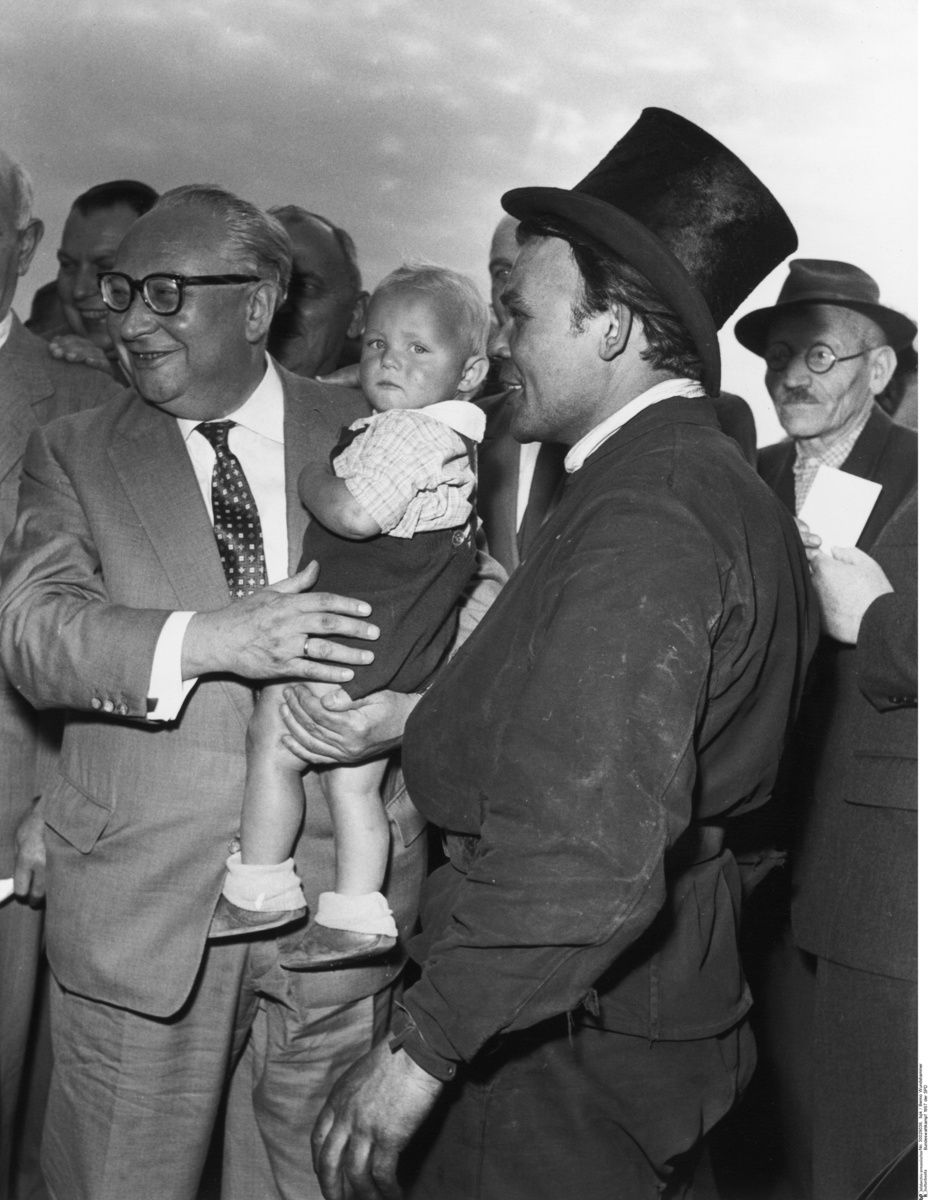Abstract
With the death of party chairman and parliamentary faction leader
Kurt Schumacher on August 20, 1952, the SPD lost its unchallenged and
virtually irreplaceable leader. At its party congress in Dortmund, the
SPD elected Schumacher’s former deputy, Erich Ollenhauer, as its new
chair. A month later, he also became the head of the party’s Bundestag
faction. At first, Ollenhauer essentially advanced Schumacher’s
programmatic goals, but he did so without any of his predecessor’s
charisma. With Ollenhauer as its leader and candidate for chancellor,
the SPD only won 28.8 percent of the vote in the Bundestag elections in
1953 and 31.8 percent in 1957 while the Union under Adenauer not only
won both of these elections handily, but also achieved an absolute
majority in 1957.
Nonetheless, as a unifying figure for the SPD, Ollenhauer succeeded
in safeguarding the previously controversial programmatic
re-organization of the party prescribed in the Godesberg Program (1959).
As a kind of transitional chairman, he paved the way for the rise of a
younger generation of SPD politicians, especially Herbert Wehner and
Willy Brandt. Brandt was the party’s candidate for chancellor for the
first time in 1961.
